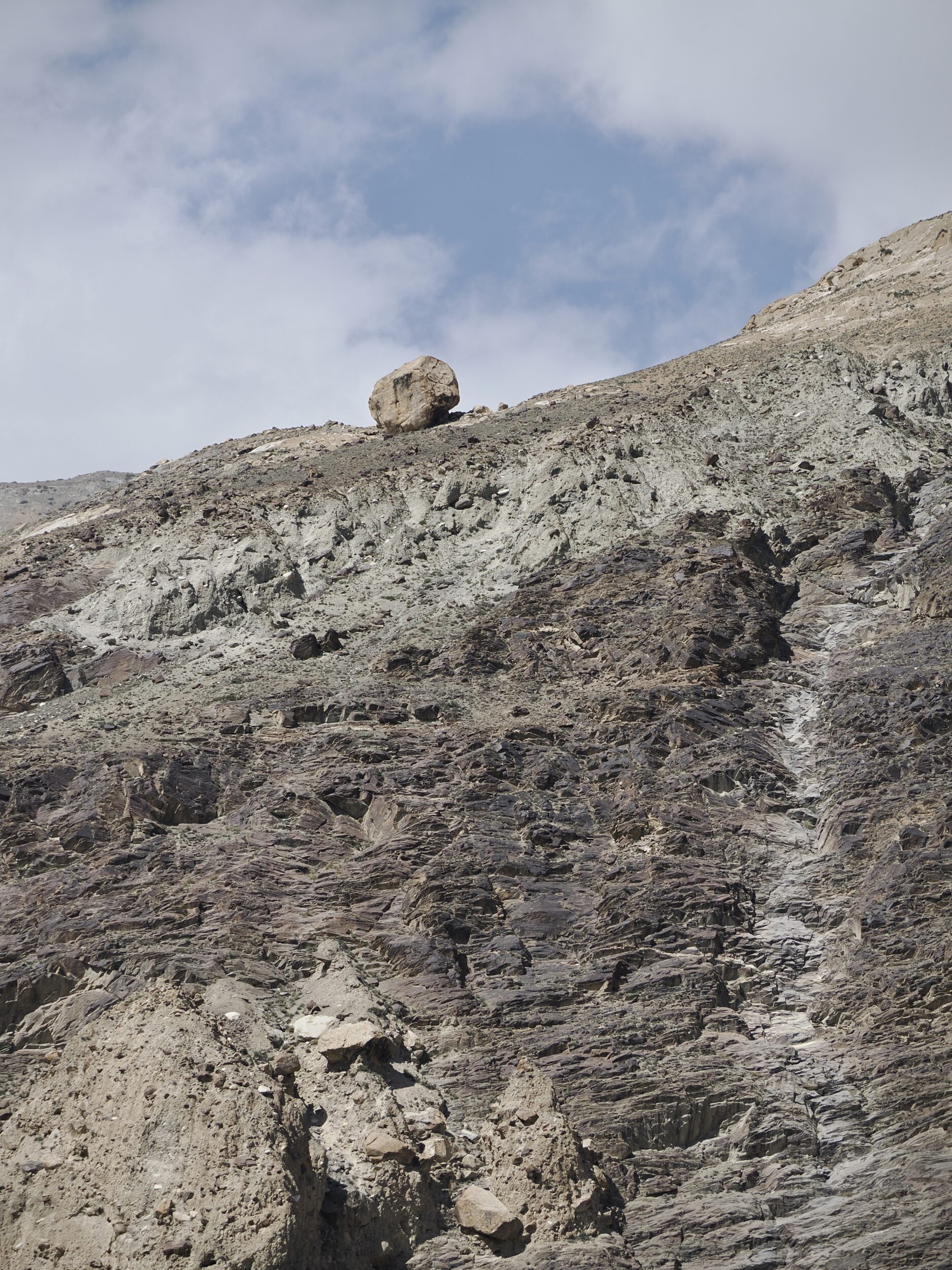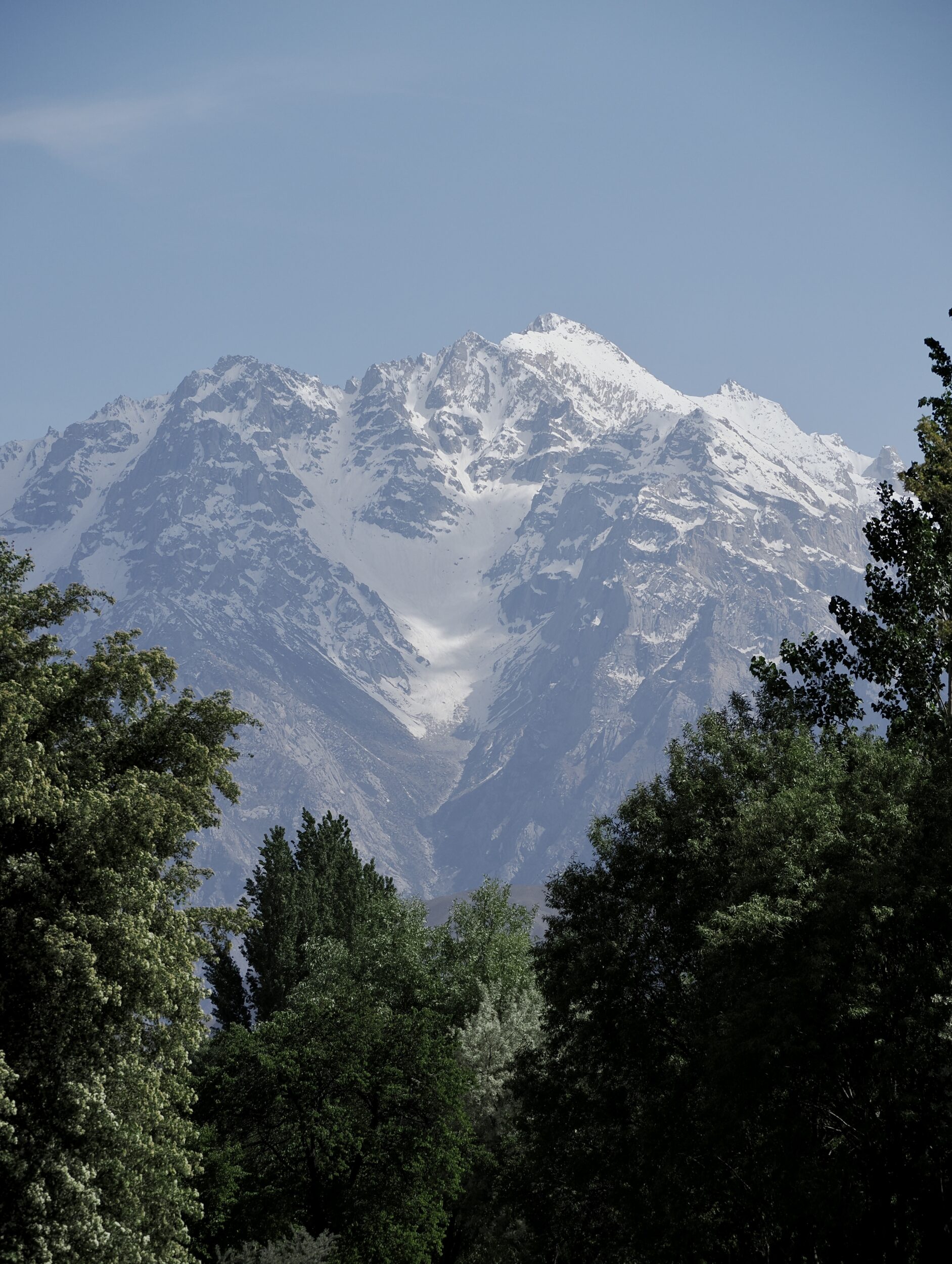If this post’s two photos were “the only available evidence”, you could assume – reasonably – that they were taken from vantage points far distant from each other.
In fact, the image below was taken less than sixty seconds after the one above, with the very same lens.
Above, I was looking across a Karakoram valley’s floor to the mountains on the far side
For the image below I had turned my head 180 degrees, shuffled my feet accordingly, then looked straight up the nearby, steep, stark, but seemingly more modest slope… our proximity to the relevant ridge (atop which the boulder perched) would have enabled it to “hide” any higher ground behind it.
As you can see, an “accident” was waiting to happen…

Standing on a flattish path, well below, I could not make any remotely-reliable assessment of the perched rock’s size.
Clearly, it had hurtled down from somewhere much further above.
I have no idea when that happened.
Obviously, one day, that boulder will “complete” its fall.
That day could arrive next week, or in many thousands of years from now.
It would be safe to assume that the boulder’s mass would greatly exceed that of all 16 members of our party.
The Karakoram region is highly dynamic, still rising…and crumbling.
There are many landslides, avalanches, floods, a deal of “extreme” weather, and earthquakes too.
Most local rivers’ water reached Terra Firma as snow.
A lot of snow falls on peaks which tower above river valleys, but very little precipitation falls directly upon the rain/snow-shadowed valley floors where most people live.
Any single Karakoram landscape is a feast of highly-contrasting elements.
Valley floors’ are typically “flat’, vast, and “barren”, but “punctuated” by meticulously-cultivated green swathes – meltwater-irrigated orchards, gardens, cereal crops, and poplar trees.
Above, spectacularly stark peaks and naked rock faces are “punctuated” by snowfields and glaciers.
Occasionally, inviting, conifer-dotted grassy mountain meadows are also evident.
